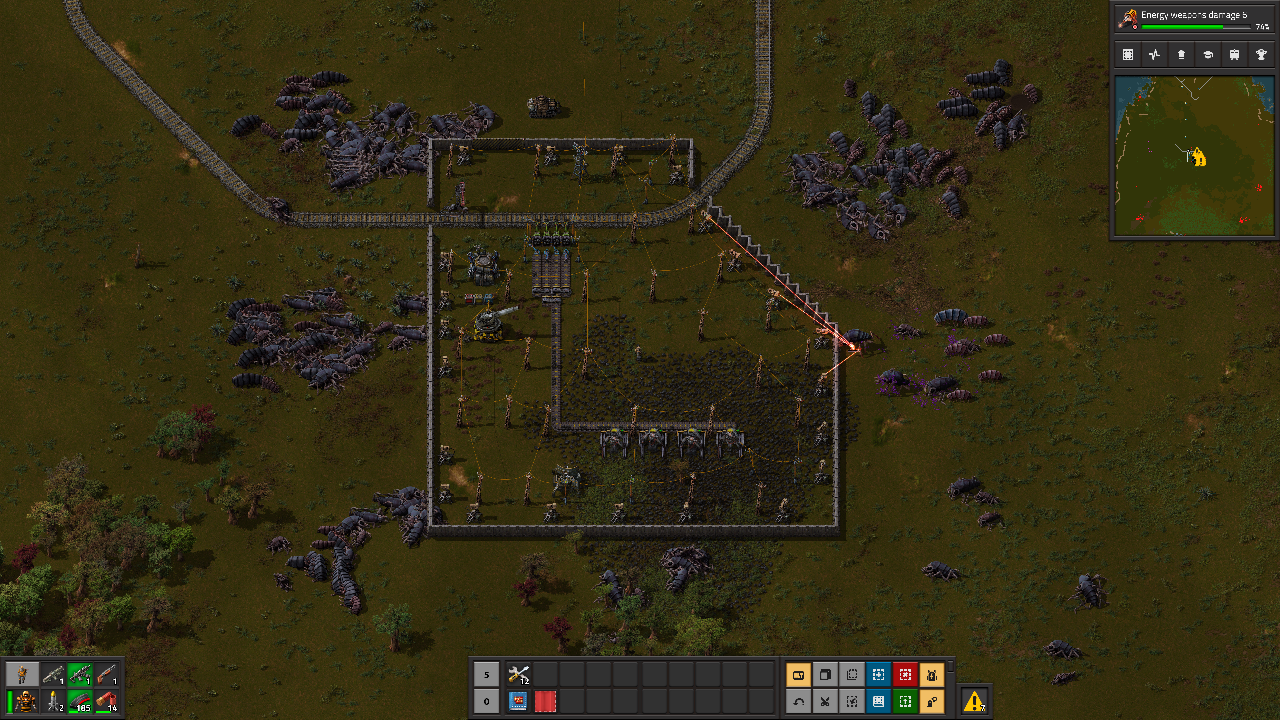There's Something About Factorio
Scrap the business books. If you want a real-life lesson in scaling your business, look no further than Factorio.
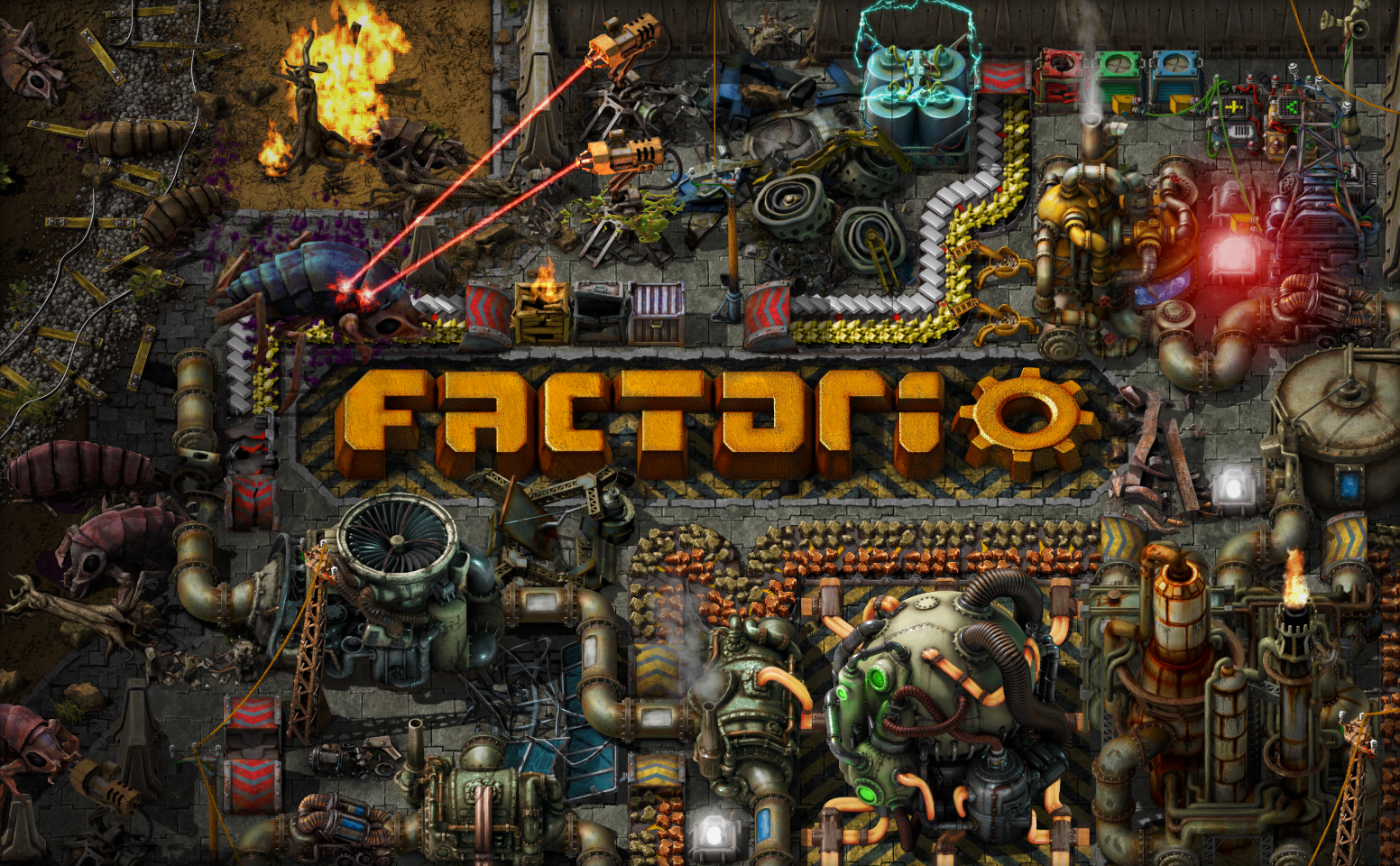
Ask a growing contingency of fans in the tech industry what their favorite business book is and they'll tell you to scrap the books in favor of Factorio. What is it about this game that appears empirically linked to success in business? Articles include:
Even the Shopify CEO Tobi Lutke raves about it, bragging that the company allows employees to expense game licenses:
Shopify lets people expense factorio. This idea is spreading 👌 https://t.co/lTnDKDDrmO
— tobi lutke (@tobi) February 13, 2022
So, what's the dealio with Factorio?
The Martian, minus potatoes
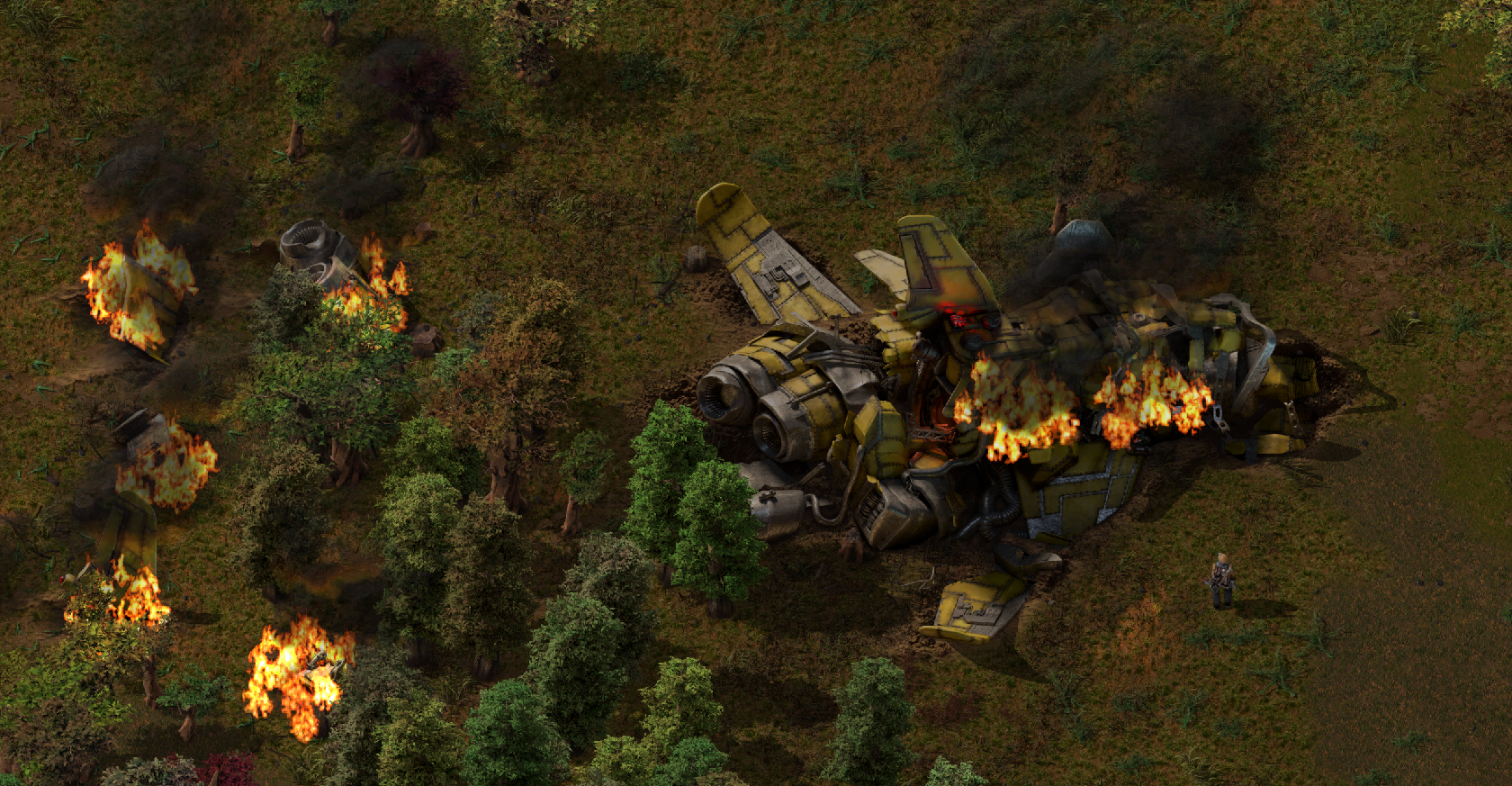
Factorio is a worldbuilding/survival game. In it, you (the player) have crash landed on a distant planet and must gather the necessary raw materials to repair your ship and return to space. Your means are scarce. Only the raw materials on the surface of the planet are what you have to work with: water, wood, iron, copper, stone, coal and (eventually) oil and uranium. You start with nothing, save but a few salvageable raw materials left in the wake of the crash.
Meanwhile, far off in the distance, alien life (think: building-sized bugs) are aware of your presence. The swarm grows. You are increasingly seen as a threat that must be neutralized.
The opening moments of a new game demand you embrace physical labor. You procure bits of raw stone and wood by hand.
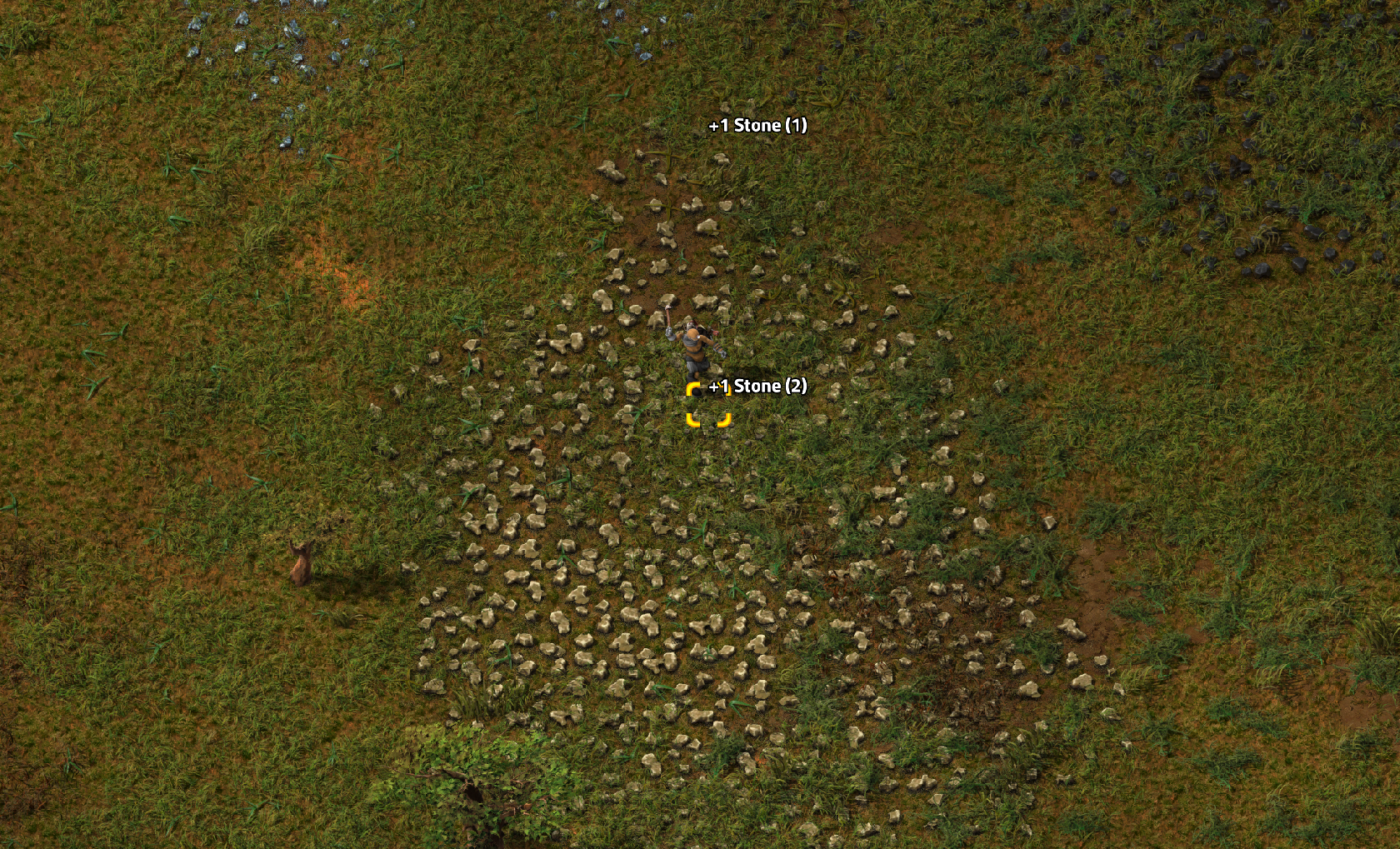
You assemble your first smelter (a stone furnace) and break your own back carrying coal and iron ore to it.
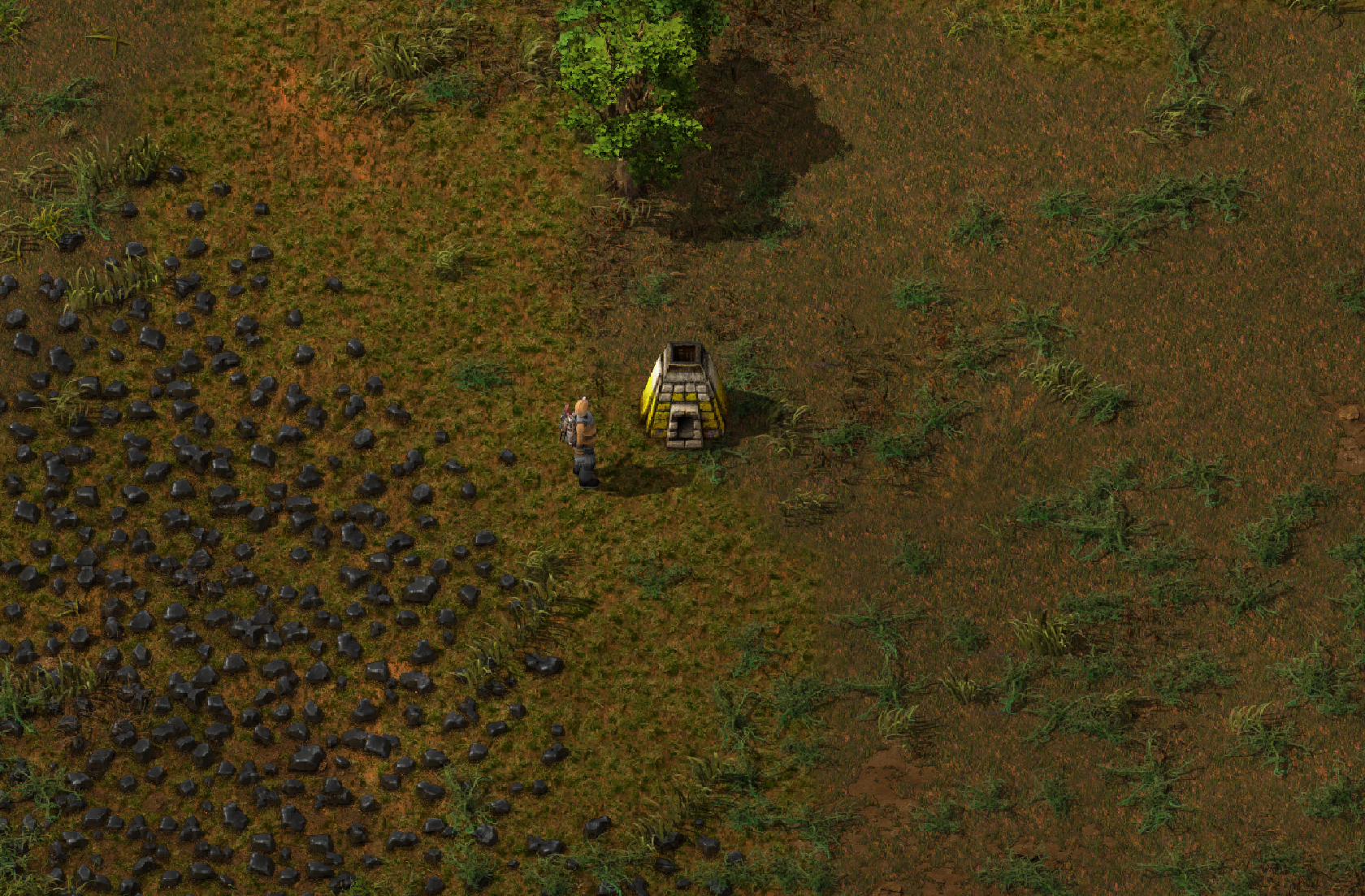
Eventually, you collect enough materials to toss into your smelter. As the kiln roars to life, the sweat of your labor bears fruit in the form of your first processed material: iron plates.
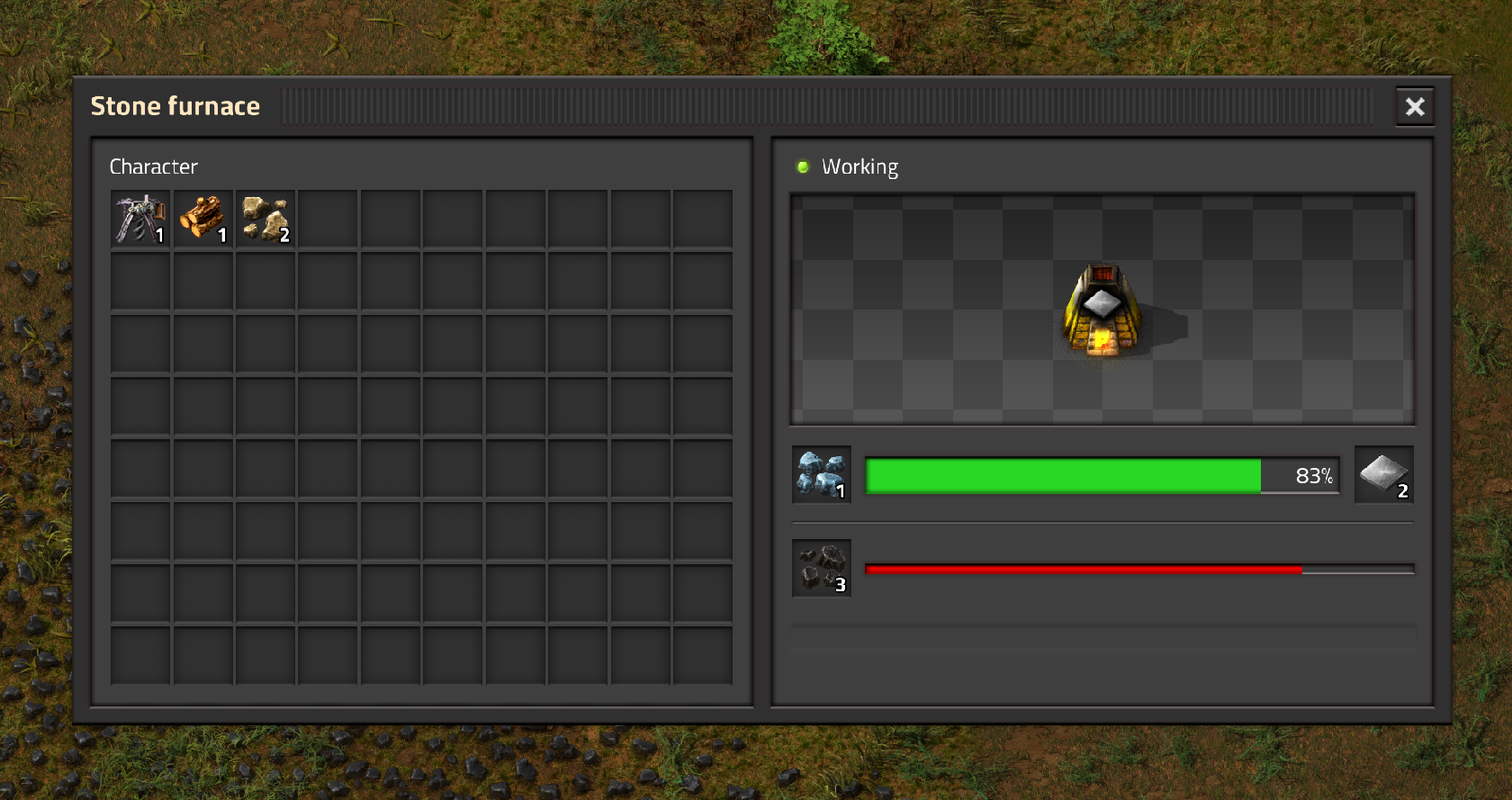
Repeating this process – digging, smelting, and the schlepping of raw earth to-and-fro – eventually produces enough iron plates to create a single conveyor belt.
The seeds of an epiphany are planted. You determine that laying this belt between the source of the ore and the smelter eliminates the manual labor of hauling these items on your own – you may simply dig and deposit them on the belt, where they are carried to the smelter automatically.
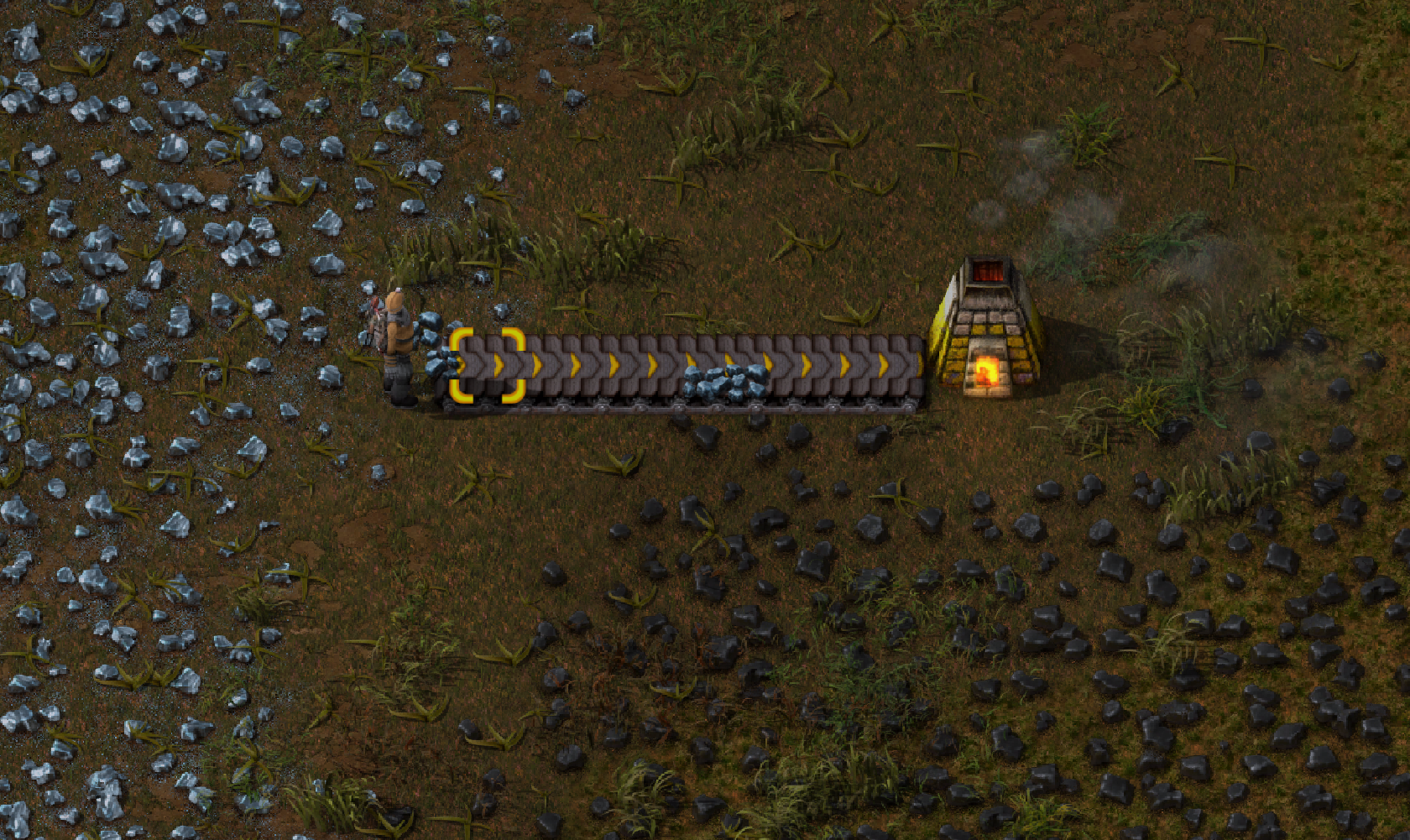
As your stockpile of processed materials grow, you gain the ability to build a mining drill that will dig for you (provided you supply the drill with fuel), depositing its results directly on the belt.
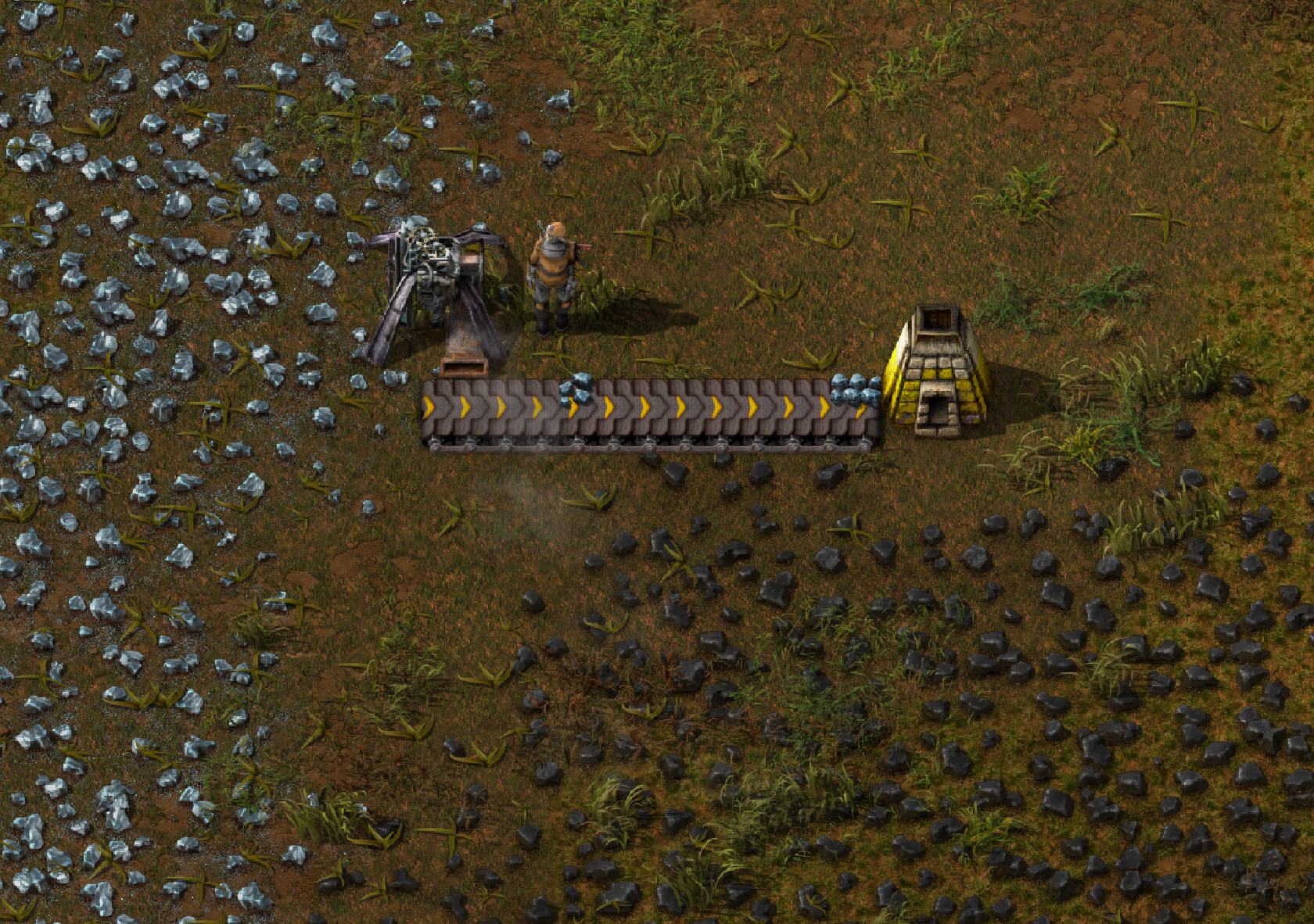
A few more materials beyond that, and you may craft an inserter – a robot-like device with a claw that can transfer an item from a source (eg. a conveyor belt) to a destination (eg. a smelter).
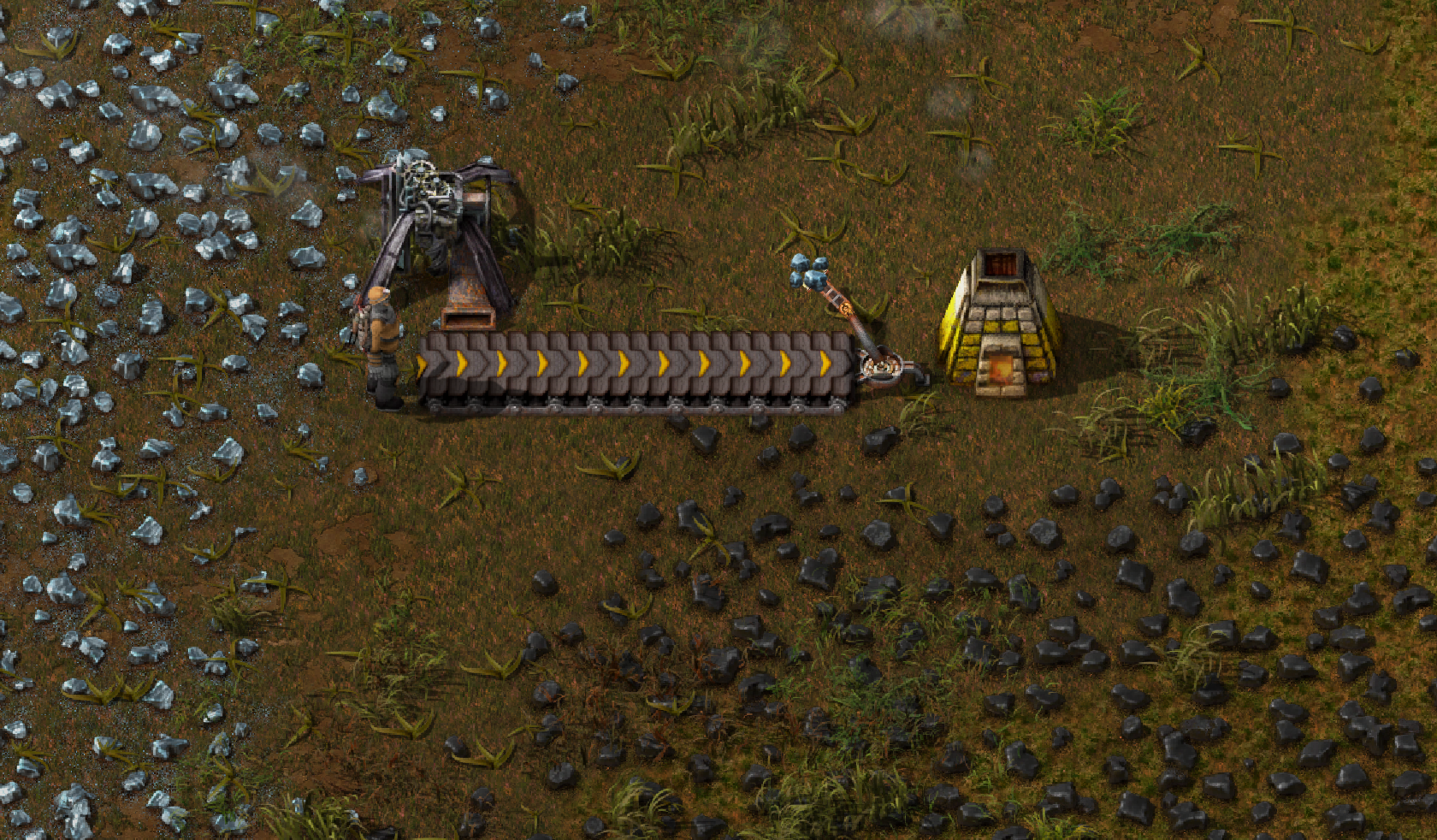
Once you have:
- a drill digging for you,
- an inserter handing-off materials for you, and
- a conveyor belt transferring materials from location (a) to location (b) for you,
...the epiphany finally takes shape: With some thought and planning, it becomes clear that you can design a process that will sustain itself, digging, fueling, and processing ore, without any human intervention whatsoever.
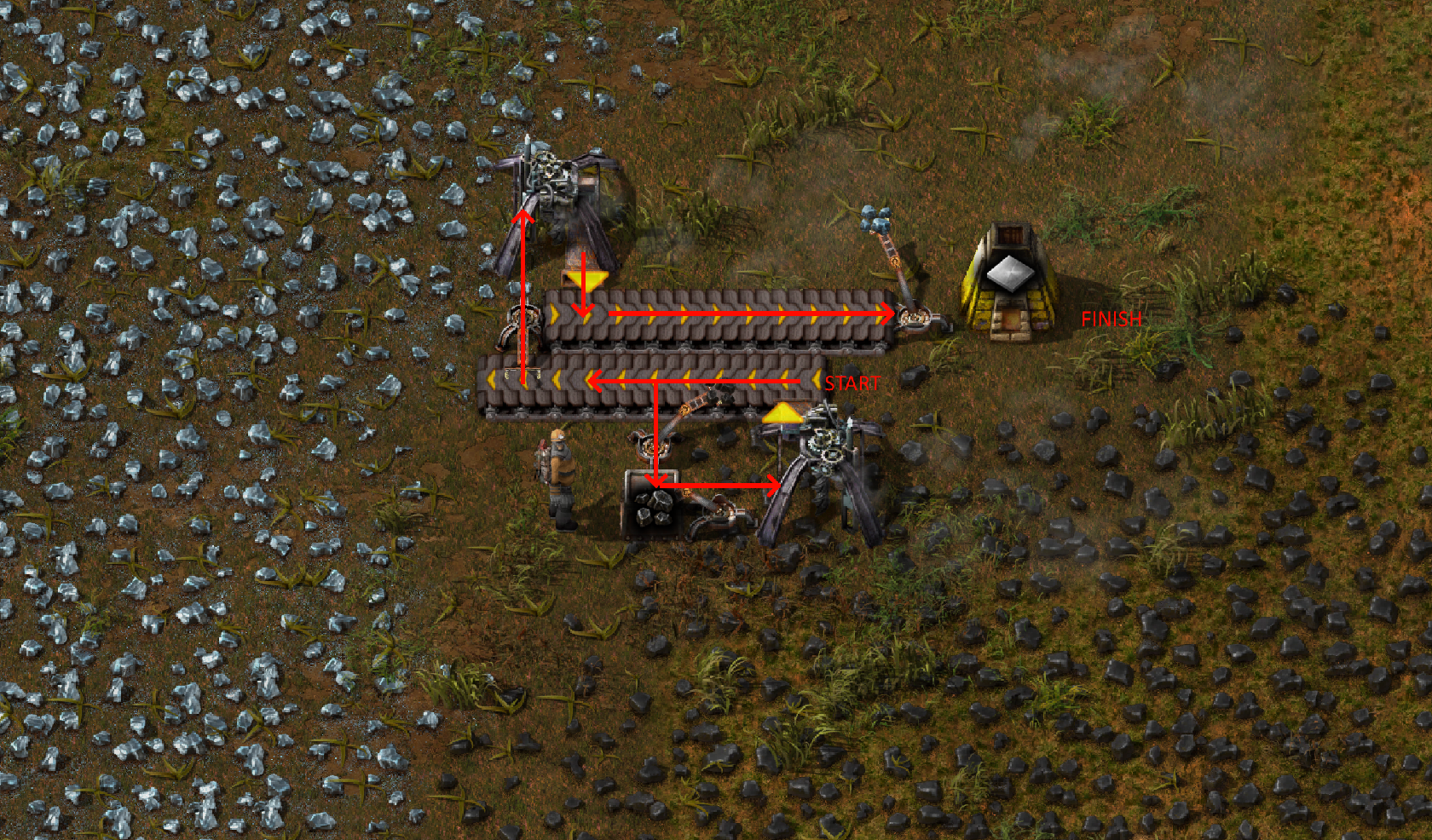
And thus, the race to automate everything begins.
Many worldbuilding/survival games exist. The escape from a distant & hostile planet is certainly not a new concept as far as video games go. What is so novel about Factorio's approach? Why does it lend itself particularly well to lessons needed in scaling a business?
To answer this, we must dive into where things go off the rails.
The Problem of Scale
In the early stages of the game, setting up dozens of automated belts, miners and inserters is an free-form design exercise, lacking consistency or convention. As the game plays out, you come to find that processed materials are themselves needed for larger, more complex devices. Remember that burner drill I pointed out earlier? It requires a stone furnace as an ingredient.
Routing belts back and forth between sources and destinations quickly becomes a mess. Without intending to, you introduce bottlenecks into your processing centers. And as you switch gears to clean-up those bottlenecks, you find yourself producing new issues of resource starvation – parts of your factory that aren't getting enough materials.
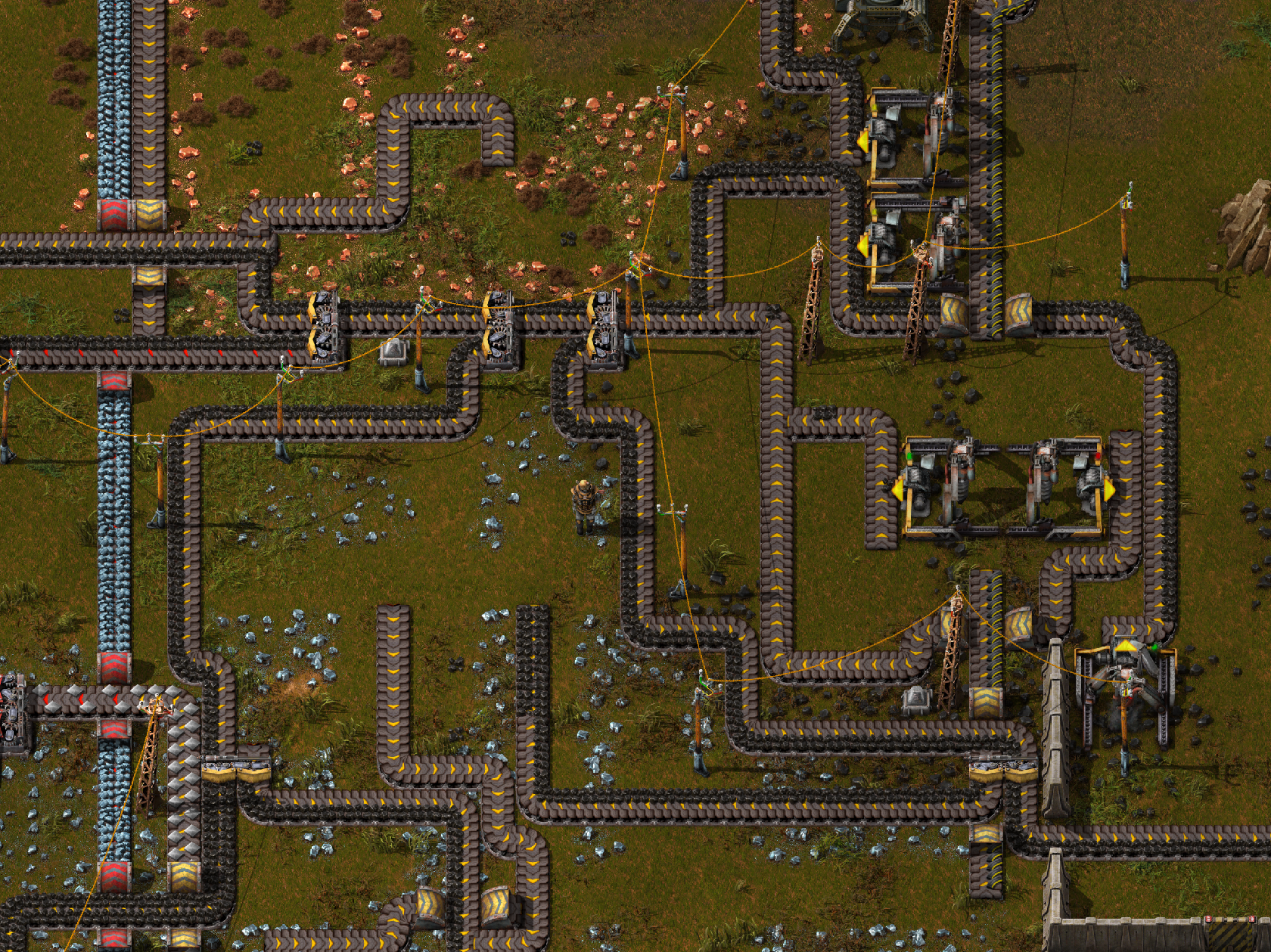
Meanwhile, you are (in parallel) trying to scale up your power needs (since all those drills and inserters require fuel). Your early sources of power come from burning wood & coal, so as you scale up your power production, your noise & air pollution scales up in kind.
Did I mention the building-sized bugs don't like pollution?
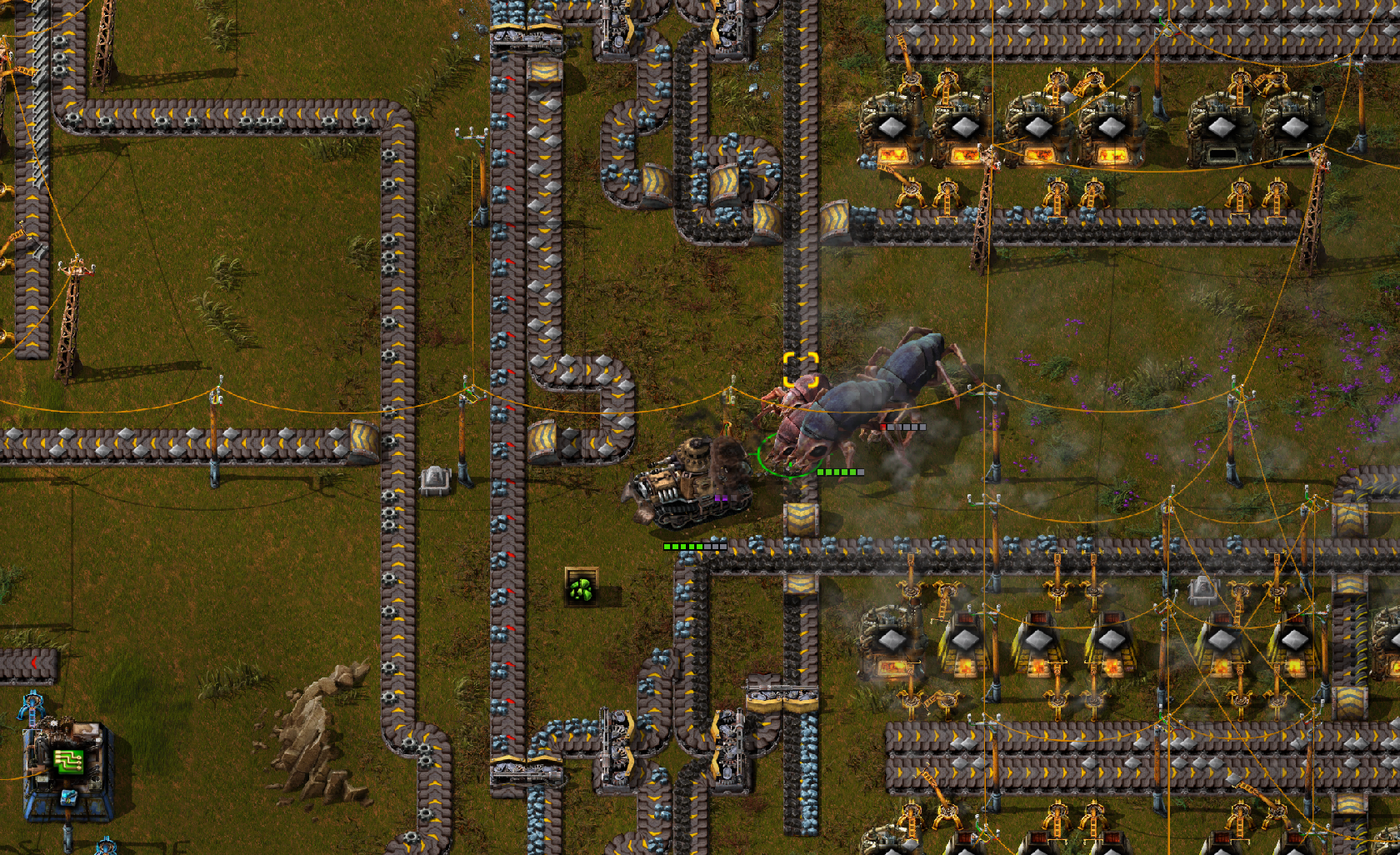
The problems continue. Before long, you discover that the ore deposit is almost entirely exhausted. Now, you face the problem of bringing in new resources from some remote location. What infrastructure will that require? (hint: high-speed rail). Venturing out to collect some oil? How are you supposed to transport liquids? You can't pour oil on a conveyor belt...additional infrastructure must be created to drill, store, transport, and refine it.
An alert pops on the screen – the alien bugs have had it. They're attacking your pollution-producing generators, knocking them offline. Your entire operation shuts down. You need to get it back online (fast!) while also (in parallel) building in defensive mechanisms – walls, guns, radar – that can warn & protect against future attacks.
It's not enough to build weapons, though – weapons need ammunition. More materials! More belts! More processing centers! But without power or materials, how will these new demands be met? How will they be built? What existing materials can be leveraged to close this gap in the short-term, in order to fulfill the long-term goal of getting the hell off this alien-infested planet?
A Metaphor for Startup Life
Most of the techies that turned me on to Factorio agree that the game is exceptional at teaching you how to grow small operations into large, complex systems. I'm a firm believer this metaphor extends to startup life as well. If you weren't shrewd enough to pick up on some of my references above, let me make it easy for you:
- Scale demands automation; efficient scale demands process.
- Solutions create new problems.
- There are good problems and bad problems – both need solving, and both require different degrees of urgency and focus.
- Trade-offs are made constantly; what matters is comprehending the impact of each concession.
Each of these bullets is (at least) a complete post in and of itself – here's an attempt at a summary.
1. Scale demands automation; efficient scale demands process.
Snake-like conveyor belts will get you nowhere; only an agreed-upon system that meets convention and is repeatable can scale. The Factorio community has a term describing an agreed-upon design that helps all players scale their factories: the "main bus." Even Tobi knows it:
Senior leadership team of shopify was called main bus for a few years
— tobi lutke (@tobi) February 14, 2022
If you have any hope of scaling your operation, you will find it in putting aside childish notions of "keeping things fluid", "going with with the flow", and "not being too rigid" – all of which are coded terms for not having the discipline to agree upon rules of engagement. Without the basics of, say, agreeing on how your team's code is committed, reviewed, merged into the repo, and deployed to an environment, those bugs (real or alien) find quick paths into your power centers and take them offline, fast.
2. Solutions create new problems.
Manual processes are very often the cause of bottlenecks, but automation isn't necessarily a panacea. If your sales team isn't able to keep up with email and SMS communications, turning to robots might produce entirely new issues. With hundreds (thousands?) of emails now en route at the press of a button, can you control them? Can you throttle them? Are you being charged for double (or worse) than what you expected? Sure, you're communicating at scale, but are you being added to spam lists at scale, too?
Every tactic you employ in Factorio has a compounding effect, and it doesn't take long before you get very good at anticipating the impact of your solution. Not enough copper? Doubling your copper furnaces only serves to jam your conveyor belts up. One solution creates another problem.
Whenever you hear someone in our biz say "hurry up and slow down," this is what we mean. If you want to get very good at thinking about how things might go wrong, Factorio is a great (and less expensive!) way to learn those lessons.
3. Good problems and bad problems require different levels of urgency and focus.
A bad problem in business: No leads; a good problem in business: too many leads.
No leads means no sales; no sales means no paychecks. This is your "alien bugs banging on the walls" problem. When this happens, you drop everything and swarm to defend. There isn't time to think, only respond. Nothing deters you until you eliminate the invasion, stabilize the factory, restore power and put new defenses in place.
Too many leads means sales are dying on the vine. Your sales team can only close so many so fast, but who should they pick first? How should they segment the list? What can be done improve their workflow? This is your "resource bottleneck/starvation" problem. With some careful planning (see above, re: solutions create new problems), you can identify ways to take the load off the team and maybe automate certain pieces of their workload.
Factorio is great at giving you a healthy mix of good and bad problems. It is a sandbox in which to test both your resilience and your thoughtfulness.
4. Understanding the impact of each trade-off.
Anyone tested in (startup) battle will tell you that it is a constant exercise in "good enough", best summarized in this meme:

If I've just built a railroad to import copper (because my local copper deposits are exhausted), does it make sense to also build an automation to fuel the train? Not if I can fuel it by hand once (or via a single wooden crate filled with coal) and have that train make its run dozens of times before needing to be refueled.
The same can be said of a business faced with building a solution vs. buying one. Why would we develop a UI by hand if it is:
- internally facing, and
- 85% of the functionality is already available in a NoCode platform like Retool?
This lesson becomes more concrete as you grow your factory and the impacts of earlier trade-offs compound. If one focuses all their time on researching science, one should not be surprised to turn around and discover giant alien bugs eating their face off.
The same can be said for outsourcing development of startup's core IP and then watching in abject horror as your servers crash under load...and not having any on-staff expertise to swarm on the fix.
When Factorio geeks talk about the game teaching leverage, this is what they mean. It's the same reason a seasoned technical leader will agree to (what appears at first as) a half-assed solution to close a gap. Voluntarily taking on technical debt isn't done out of ignorance – it's done to solve the right problem at the right time, knowing it is good enough to hold...for now. Our time, energy & resources are limited...and the bugs are banging on the walls.
Chris and I have talked at length about The 80/20 Principle; Factorio is incredibly effective at giving you a real-world lesson in it. You absolutely can take short-cuts (and in many cases, you'll have no choice). You will feel the repercussions of those choices later.
Automation & Leverage 101
I've only just breached the surface of Factorio in this post – there's an incredible amount of cool stuff revealed as the game progresses (eg. logic circuits, robot-based construction, etc.) so I encourage you to try it out. It's a surprisingly fun and fascinating way to look at the many different ways a complex system can be faulty or beautifully efficient.
You will come out of a Factorio game with a much greater sensibility around automation & leverage. I've taken a page from Tobi – my engineering team at Wrapmate is also able to expense the game. Who cares what business books you've read! Can you complete Factorio on death world settings?
On the Factorio subreddit, fans have deduced that the iron demands (alone) to go from nothing to functional spaceship is 7,619,920,134 raw ore. You're not going to be digging and processing that by hand! But if you are savvy enough to build a system capable of pulling that off, and dealing with all of the hurdles you'll face along the way, I suspect you won't be far off in being able to apply what you've learned in the real world.
Just remember to keep an eye out for those building-sized bugs.
